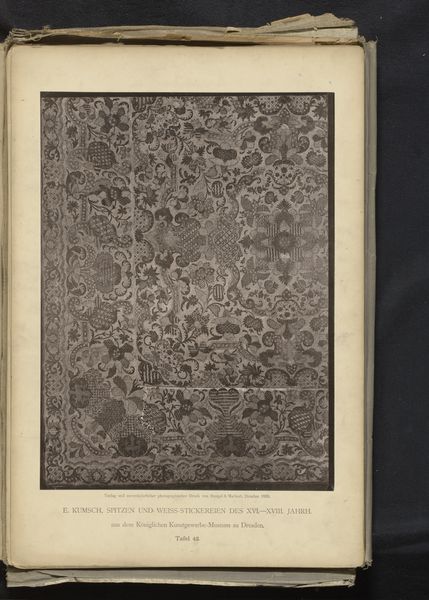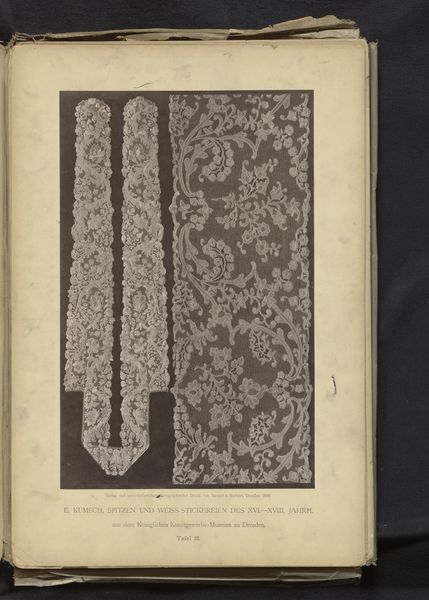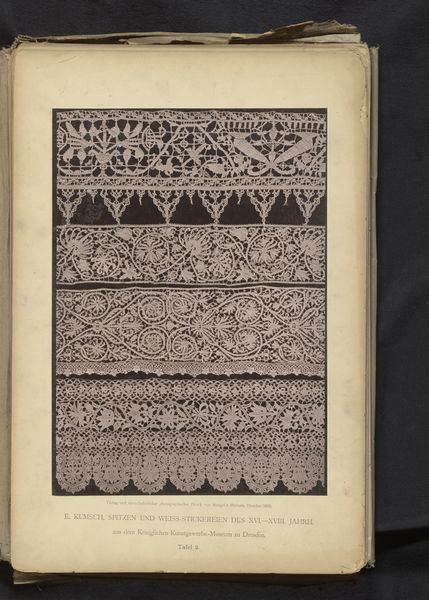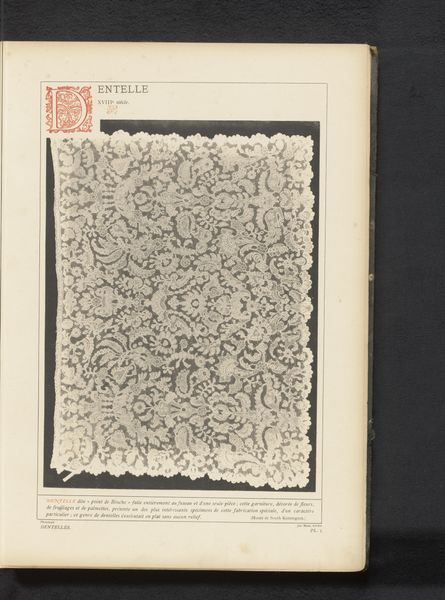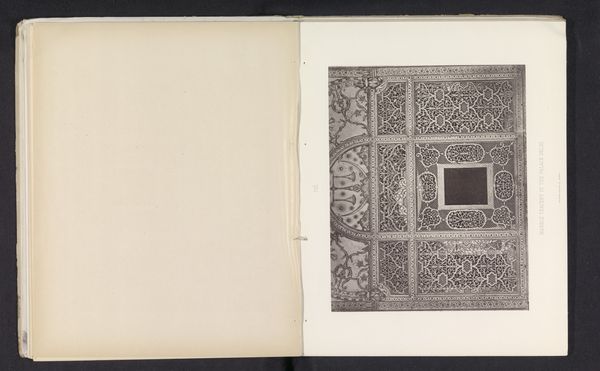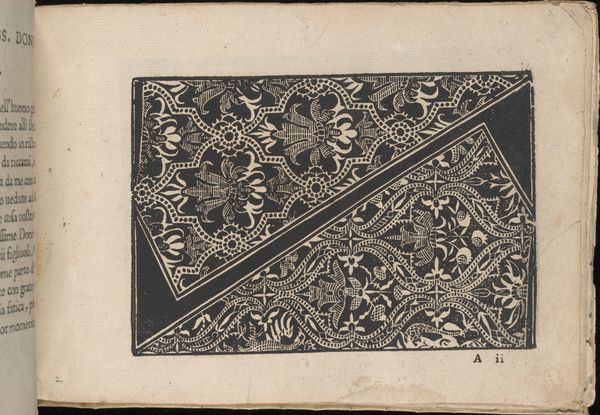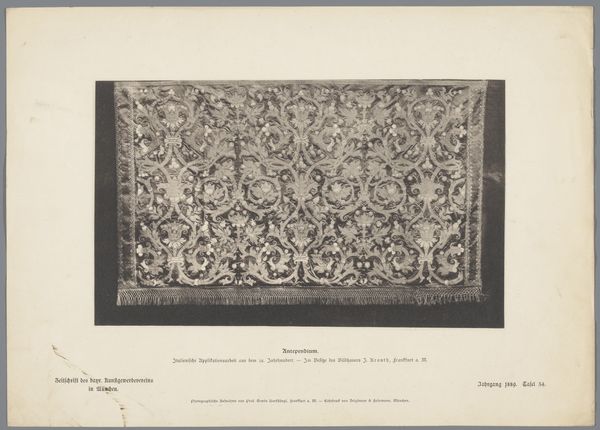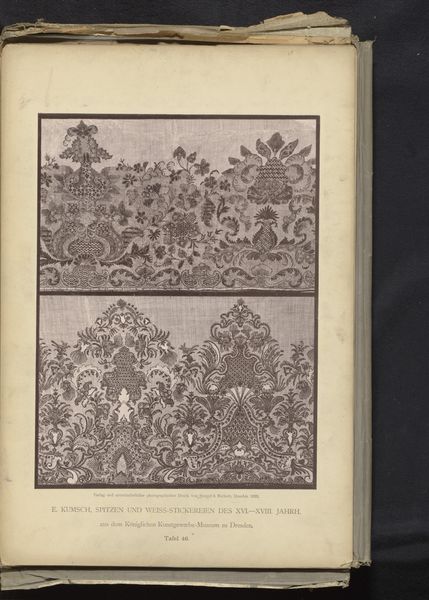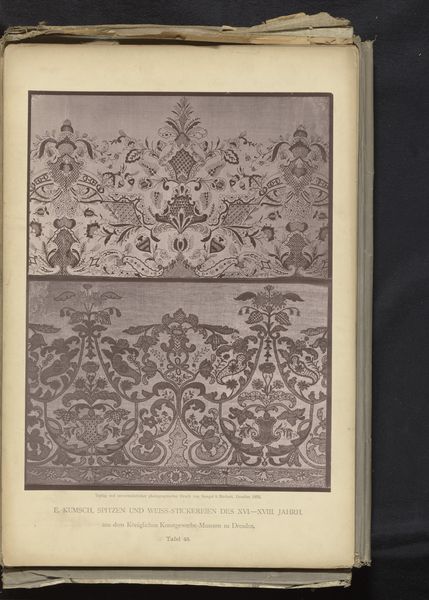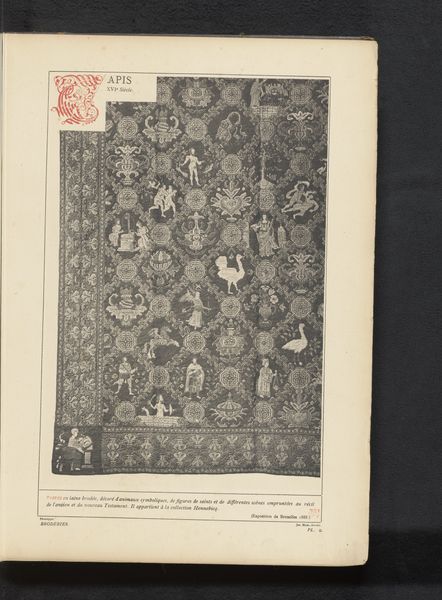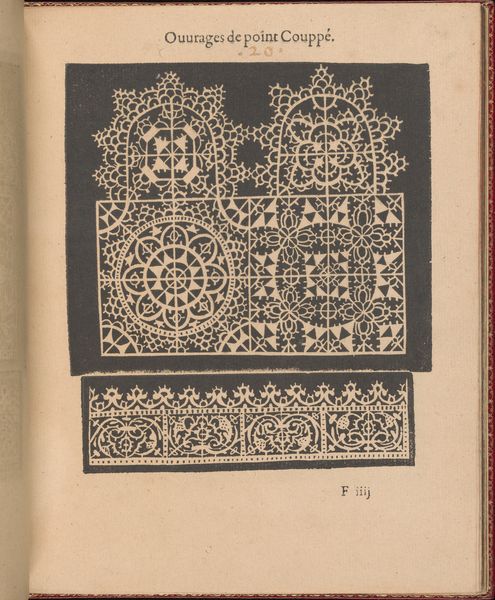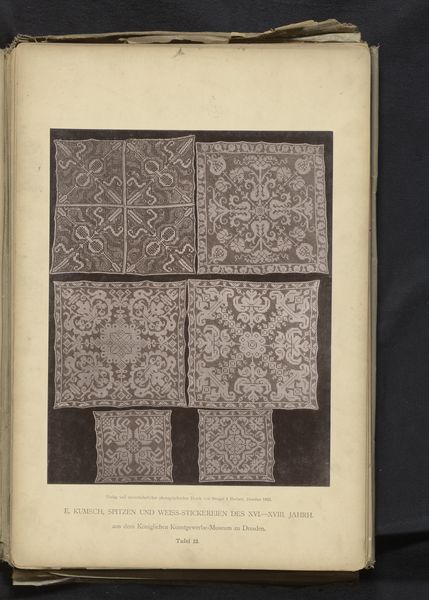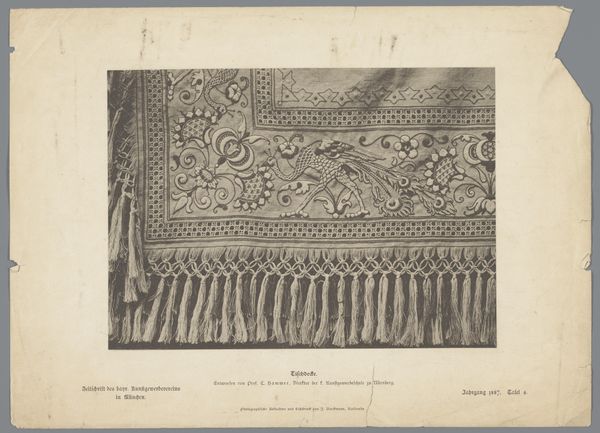
Drie stukken 18de-eeuws Duits borduurwerk uit de collectie van het Kunstgewerbemuseum in Dresden, Duitsland 1888
0:00
0:00
drawing, fibre-art, print, textile
#
drawing
#
fibre-art
#
16_19th-century
# print
#
textile
#
historical fashion
#
19th century
Dimensions: height 306 mm, width 246 mm
Copyright: Rijks Museum: Open Domain
Editor: We are looking at an image of a print from 1888, housed at the Rijksmuseum. It depicts three embroidered patterns. They appear to be quite intricate, delicate and highly stylized. What are your thoughts on this image? Curator: Focusing purely on form, notice the tripartite division of the visual field. Each band showcases variations within a consistent stylistic framework. Observe the interplay between positive and negative space, created by the dense embroidery. How does the symmetry, or asymmetry, within each band affect your reading of the overall composition? Editor: The symmetry does make them feel quite balanced and perhaps classical? Curator: Indeed. Though replicated here as a print, the inherent texture of textile is critical. The dimensionality of embroidery invites tactile engagement, an experience flattened by photographic reproduction. We also must consider the formal aspects of line and shape and ask how these interact in an artwork of this type. Editor: So, you mean we should see this image as one removes itself from considering that this is depicting an embroidered artwork. I didn't expect to consider this as lines and shapes and so forth! Curator: Exactly. One must ask what can one glean from the forms themselves. Through a concentrated understanding of the structure, an awareness of the essence can come to the fore. This has certainly offered me some insight to how art history and the historical documents contained may reveal how certain textiles might be appreciated differently as documents than they were previously perceived. Editor: I'm certainly more interested in taking a second look at all these linear patterns I have taken for granted in textiles. Thank you!
Comments
No comments
Be the first to comment and join the conversation on the ultimate creative platform.
